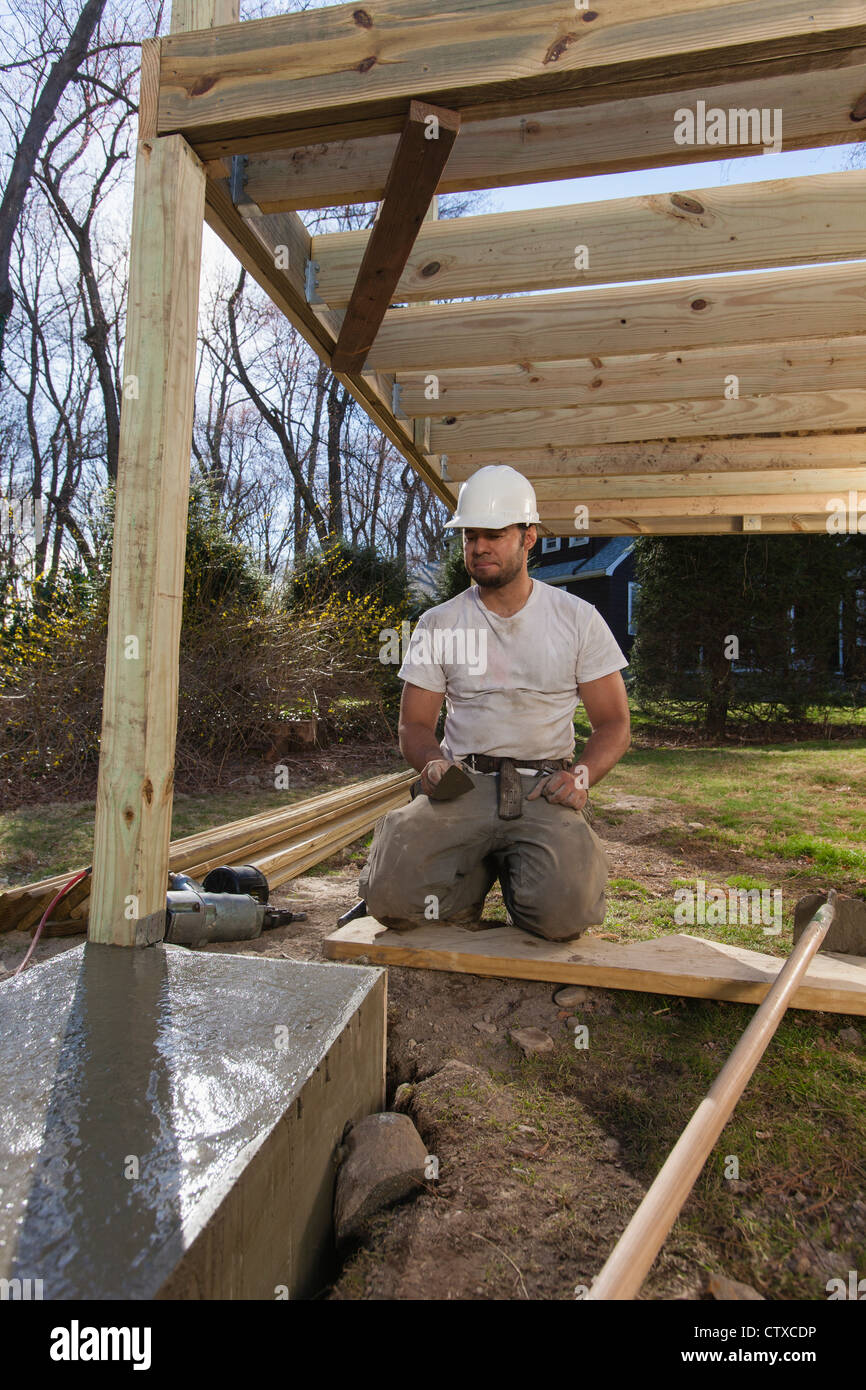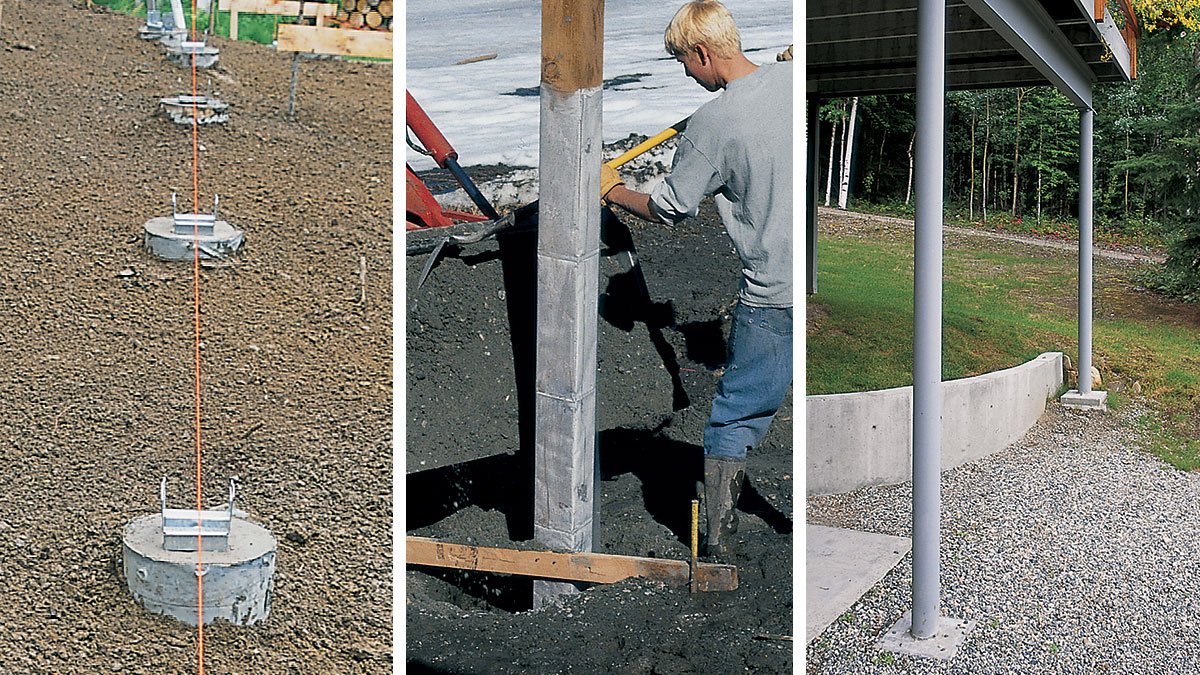Selecting the Right Deck Footings for Stability and Toughness
The longevity and safety and security of your deck depend heavily on the kind of grounds you choose, as they give the important assistance and security to endure the examination of time. In this conversation, we will certainly explore the different kinds of deck grounds, consider the essential aspects to consider when making a decision, and delve into the pros and disadvantages of various options.
Kinds Of Deck Grounds
These grounds are composed of a round hole loaded with concrete, which gives a strong structure for the deck blog posts. Concrete pier grounds are reasonably very easy to mount and supply superb security, making them a preferred option for lots of deck jobs.
These grounds are installed by screwing them right into the ground, which develops a protected foundation for the deck. They additionally enable for easy change and leveling of the deck if required.
Additionally, some contractors go with precast concrete grounds. These grounds are made of durable concrete and can be found in different shapes and dimensions to fit different deck layouts. Precast concrete footings are hassle-free to set up and offer a secure base for the deck framework.
Finally, an additional choice is the post-in-anchor footing system. This kind of footing involves driving a steel support right into the ground and connecting it to the deck post. It supplies flexibility in regards to positioning the deck articles and appropriates for decks with lightweight frameworks.
When choosing the right kind of deck footing, it is necessary to consider aspects such as soil conditions, deck lots, and local building ordinance (Deck Footings). Consulting with a specialist contractor or structural designer can aid make certain the ideal footing is selected for a secure and risk-free deck
Aspects to Take Into Consideration When Selecting Footings
When selecting the ideal grounds for a deck, it is important to carefully consider different elements such as soil problems, deck lots, and adherence to local building regulations. These aspects play a substantial role in guaranteeing the stability and longevity of the deck structure.
The type of dirt on which the deck will certainly be developed figures out the type of footings called for. On the various other hand, decks developed on clay or expansive dirts might need footings that can suit the dirt's propensity to expand and contract.
Another vital variable is the deck tons. The weight of the deck, including the materials used and any kind of prospective live lots such as furnishings or gatherings, have to be taken into consideration when selecting grounds. The footings must be made to bear the weight of the deck and disperse it uniformly to avoid any structural concerns or failings.
Finally, adherence to local building ordinance is paramount. Building ordinance differ from region to area, and it is important to conform with the specific requirements established by the regional authorities. Deck Footings. These codes ensure that the deck is constructed safely and fulfills the required criteria for structural honesty and load-bearing capability
Concrete Grounds: Disadvantages and pros

Concrete footings provide a number of advantages and downsides when utilized as like this the structure for a deck. On the positive side, concrete footings offer outstanding stability and sturdiness.
One more advantage of concrete footings is their versatility. They can be poured right into various sizes and shapes to fit different deck designs and configurations. Concrete footings can be tailored to fit the details demands and demands of the deck structure.
Nonetheless, there are likewise some disadvantages to using concrete footings. One significant negative aspect is the expense and labor included in their installation. Concrete grounds call for excavation and commonly need the support of hefty equipment. This can enhance the overall cost of the deck task and may require specialist help.

Helical Piers Vs. Sonotubes: Which Is Much better?
In taking into consideration the structure options for a deck, the comparison between helical piers and sonotubes is essential in figuring out the superior selection. They image source are turned right into the ground making use of hydraulic machinery, supplying a steady and long lasting structure for the deck.
When it pertains to security and toughness, helical piers have the upper hand. The helical plates on the piers produce a strong grasp with the soil, shifting or avoiding any movement of the deck. This is specifically useful in areas with unpredictable or moving soil conditions. Sonotubes, on the various other hand, rely solely on the concrete loading for stability, which may not provide the exact same level of strength and resistance.
In terms of setup, helical piers are fairly simpler and faster to install compared to sonotubes. visit this site right here The hydraulic machinery made use of to turn the piers into the ground guarantees a quick and efficient procedure. Sonotubes, on the various other hand, require digging holes and pouring concrete, which can be labor-intensive and time-consuming.
Furthermore, helical piers are a more flexible alternative. They can be made use of in numerous dirt problems and can be readjusted or strengthened if needed. Sonotubes, on the other hand, might require added support, such as rebar, in specific soil problems or areas with high lots demands.
Picking the Right Footings for Your Deck's Measurements
For optimum architectural stability, it is vital to thoroughly select the appropriate grounds that align with the measurements of your deck. The measurements of your deck, including its size, height, and length, play a significant function in identifying the type and size of footings required.
When selecting footings for your deck, it is necessary to think about the load-bearing capacity of the soil. The weight of the deck, incorporated with the weight of any kind of furnishings or individuals on it, applies a significant force on the footings (Deck Footings). Therefore, it is crucial to select footings that can sufficiently sustain this weight without moving or sinking in time.
The shapes and size of the footings ought to also be considered. Bigger decks with greater dimensions need bigger grounds to provide sufficient security and support. The shape of the footings, whether they are round or square, depends on the layout and format of the deck. In addition, the depth at which the grounds are set up must be identified based upon the frost line in your region to stop any heaving or moving due to freezing temperatures.
Verdict
In verdict, picking the best deck footings is critical for making sure stability and longevity. Factors such as the kind of footings, the deck's measurements, and the pros and disadvantages of different alternatives ought to be thought about.
These grounds consist of a round hole filled with concrete, which supplies a solid foundation for the deck posts. Concrete pier grounds are fairly simple to set up and offer outstanding stability, making them a prominent option for many deck projects.
Precast concrete grounds are convenient to set up and give a steady base for the deck structure.
It offers flexibility in terms of positioning the deck posts and is ideal for decks with light-weight frameworks.
Concrete grounds supply a number of advantages and negative aspects when made use of as the foundation for a deck.